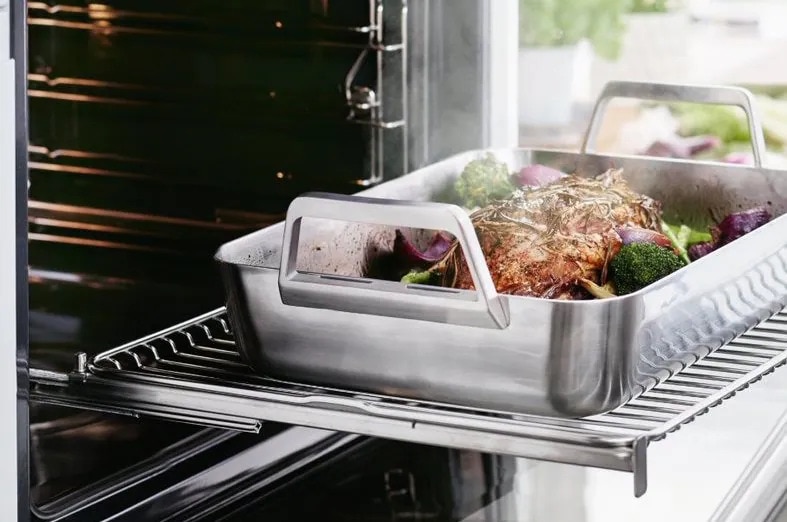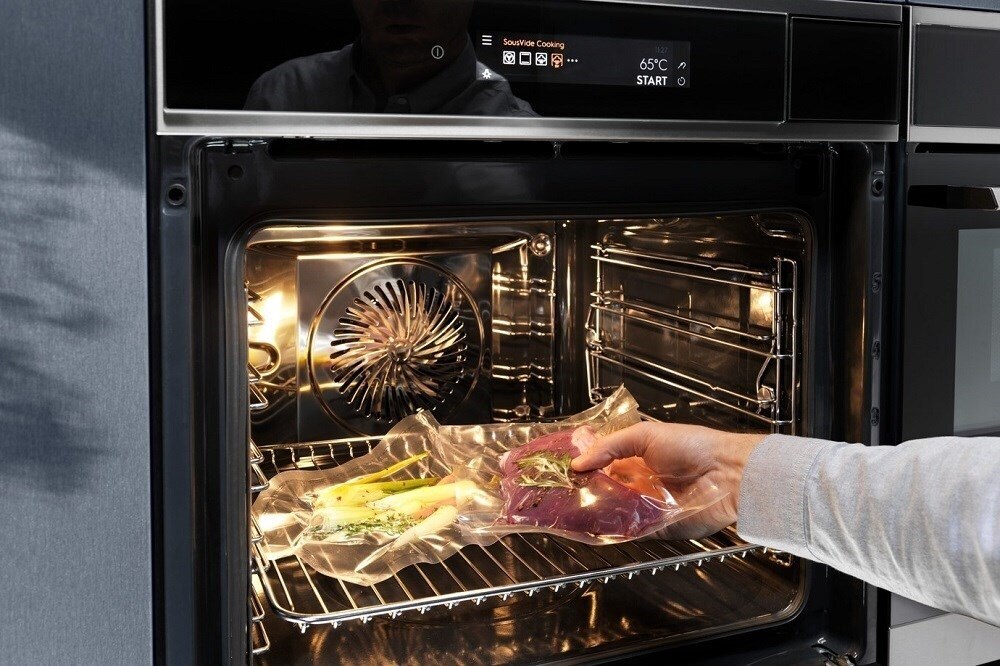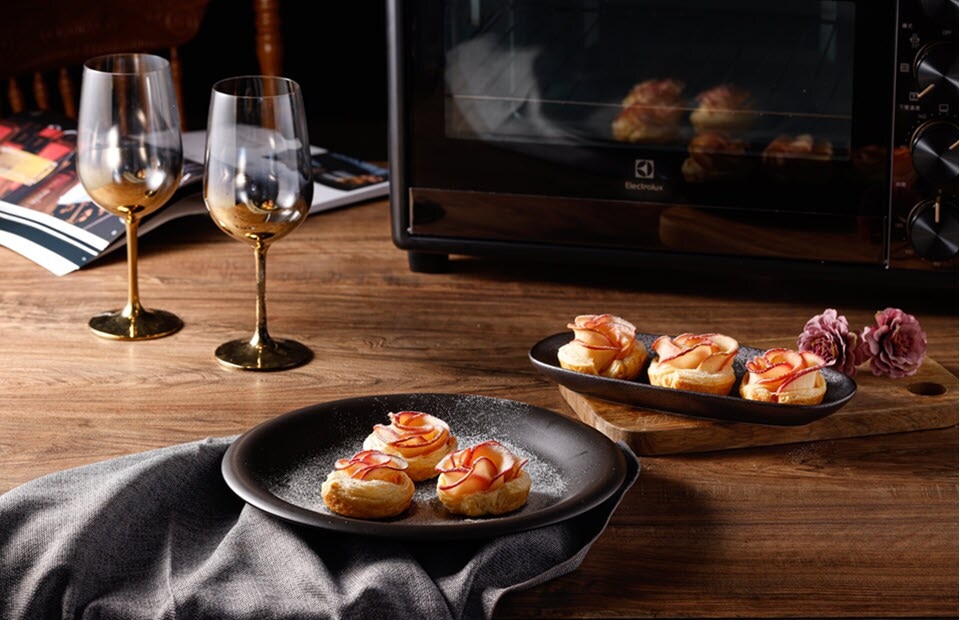Complete guide on how to use oven
5 minute read |
Figuring out how to use your oven at home can be pretty daunting, especially if you’re not at home in the kitchen. But in reality, it’s easier than you might think, as long as you keep a few basic things in mind. With this guide, Electrolux Singapore will help you on your oven cooking journey.

Find out what kind of oven you have
You need to know what kind of oven you’re dealing with to be able to use it efficiently. There are several different types of ovens, and they need to be used in different ways. Here are the most important varieties:
Gas ovens

Gas ovens use a gas-fuelled burner to cook your food. Gas is brought to the burner and ignited, and burns until the oven reaches the set temperature. The burner is then automatically turned off until the temperature lowers again. It then turns on to reach the set temperature again.
If your home already has a gas connection, gas ovens are relatively cheap to install and run, though they are notorious for their uneven heat distribution.
Electric ovens
Electric ovens use electrically heated coils to cook the food. The coils heat up relatively slowly, but then keep a constant temperature more steadily than a gas oven can. While electric ovens can be more expensive to run, many people also find them more convenient, especially for baking and broiling.
Convection ovens
One of the most recent evolutions of the oven, convection ovens add more heating elements and a fan to reach more stable temperatures. Convection ovens usually cook your food most evenly when compared to other oven types. They also cook your meals quicker than other ovens, so keep that in mind when following recipe instructions.
Where to place your oven rack
For about 90% of all cooking cases, the answer to the question “Where in the oven should I place my food” is “in the middle”. Ovens are designed in a way that makes the very middle the place with the most even heat distribution, so most foods will cook very well there.

However, here are some additional tips:
- If you’re baking things that should have an extra crispy underside, place the rack near the bottom
- If you’re going for a crunchy crust or broiling, place it near the top.
- If you’re cooking more than one batch of something, such as cookies, you might want to put one sheet near the top, one near the bottom, and then rotate them. In a convection oven, however, this isn’t as important, since the heat gets circulated evenly.
How to preheat oven and how long
All ovens need to be preheated, whether they’re gas, electric, or convection. The only difference is how long should you preheat an oven to reach the best cooking temperature.
Gas ovens generally reach high temperatures much more quickly than other types, with the oven often ready for cooking within 5 to 10 minutes of turning it on.
Electric ovens and convection ovens need a bit more time, so allow for 15 to 20 minutes for preheating. Modern ovens will usually let you know when preheating is done, either with an indicator light or on an LED screen.
When you’re preheating, remember to:
- Not open the oven door unnecessarily, since the heat will escape and the preheating will take longer
- Take out the cooking trays you need before turning on the oven
How to work around your oven’s hot spots
Ovens often have areas with more intense heat and areas with less heat. Those hotter sections, the so-called “hot spots”, can be used to cook food more quickly, but also put your food at risk of burning. Gas ovens are most notorious for these hot spots, since the heat distribution in gas ovens isn’t as even as it is in electric or convection ovens.
Here are some tips on how to deal with your oven’s hot spots:
- Find the hot spots by putting slices of bread on a cooking tray and putting them in the oven. Bread that browns more quickly indicate hot spots.
- To make sure your food cooks evenly, turn your cooking trays around frequently or use a rotating cooking tray.
How to keep your oven clean
Keeping your oven clean is imperative for getting good cooking results. Not only is grime and residue unsightly, but when heated it also creates smells that may then linger on whatever it is you’re cooking.
Want a quick demo? Watch How to take care of my oven for practical tips on keeping your oven clean and working efficiently.
Many modern ovens come with a self-cleaning function, usually in three varieties:
- Pyrolytic ovens burn grease and sugar residue, so you only have to wipe up a bit of ash
- Catalytic ovens work similarly, but only take care of grease, while sugar residue is unaffected
- Steam-cleaning ovens soften up the dirt for you, so you only have to wipe It off with a rag
For how to clean oven manually, you also have several options:
- Store-bought oven cleaning products: Work fast, but often use strong chemicals. Always follow the instructions when using these products.
- Baking soda and vinegar: The dream team of home cleaning also takes care of your oven. Apply a paste of water and baking soda to your oven’s surfaces and let it work overnight. Wipe off, spray with vinegar, and wipe again.
- Lemons: Cut two lemons in half and put them in an oven-proof bowl filled with water. Place the bowl in the oven and turn it to 120 degrees for about an hour. Open the door and let it cool off. When the inside of the oven is safe to touch but still warm, wipe the surfaces with a wet cloth.
Finally, enjoy cooking with your oven

An oven is the ultimate cooking machine, letting you create everything from cookies and cakes to roasted chicken, salmonand pizzas. And when you really know how to use your oven, cooking even intricate meals becomes as easy as pie. With Electrolux ovens, you also have the benefit of the latest technologies like pyrolytic cleaning, super-safe glass doors and steam cooking, so take the leap to upgrade your kitchen today.
-
- SteamBake for bakery-style bread at home.
- Different oven functions for diverse cooking.
- LED timer display sets exact cooking times.
-
- SteamPro delivers ultimate taste results.
- Smart food probe monitors core temperatures.
- Steamify makes it easier to cook with steam.
-
- Save money with Energy Class A in energy efficiency
- Smooth enamel interior makes cleaning a breeze
DISCONTINUED
-
- Multiple Cooking Functions including grilling, baking and roasting
- Fan-assisted Heat Circulation keeps the hot air moving around for even cooking
- Convection oven with enamel coating makes cleaning simple
DISCONTINUED



